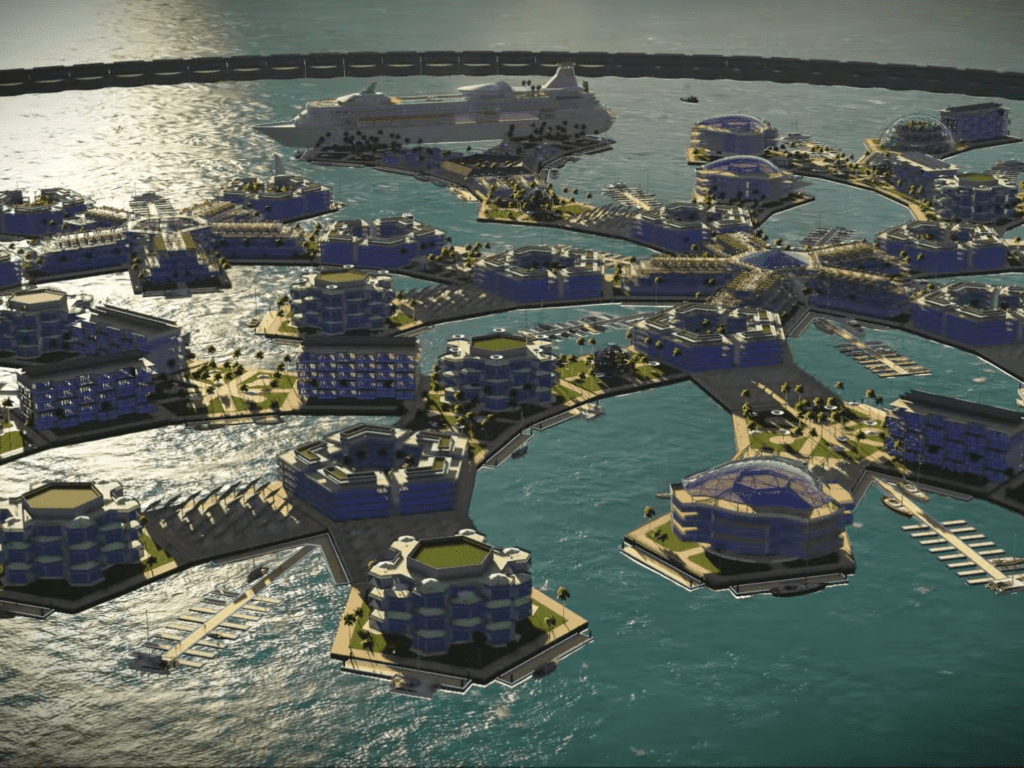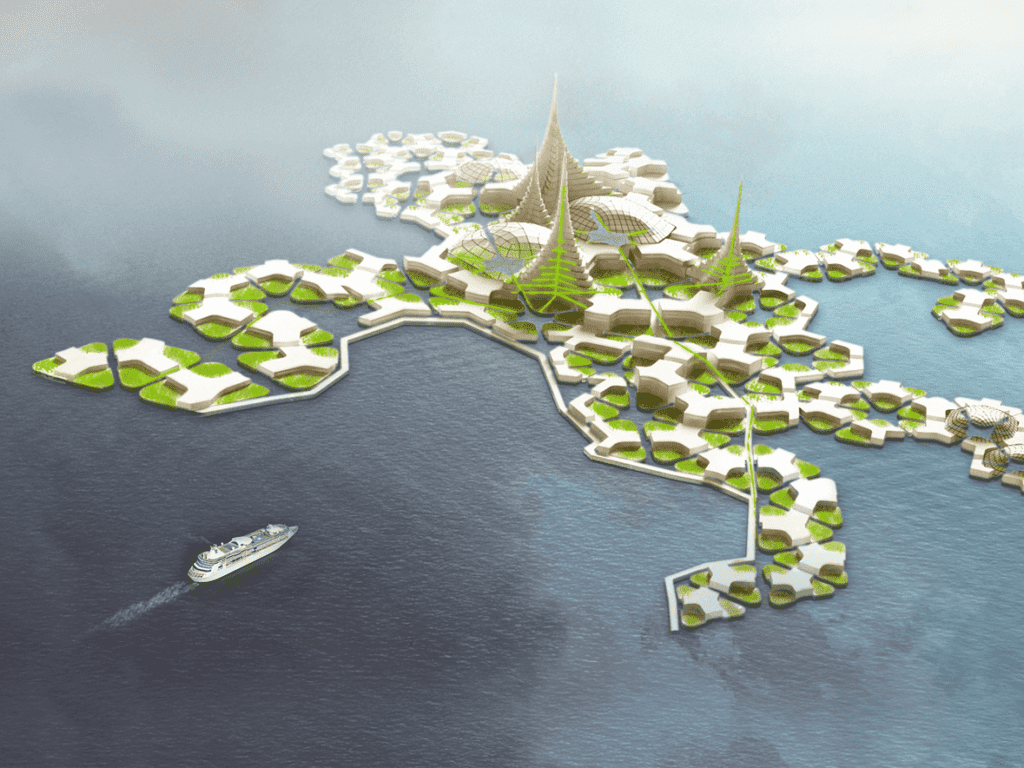
The government of French Polynesia signed a memorandum of understanding with a company from San Francisco for the construction of a floating city in the country’s waters by 2019. Once completed, the pilot community should house a couple dozen people and, if proven successful, can be scaled to thousands of people.
The Seasteading Institute, the American company behind the project, had been looking for a Pacific state to build a pilot floating community for some time. The organization’s ultimate goal is to install and maintain permanent floating communities in international waters. Out of logistical considerations, the first floating city will not be installed in international waters. If the French Polynesian project is deemed feasible, permanent communities might be set up much farther, away from territorial waters. Inside these Waterworlds, people (read investors and businessmen) can do their work without having to worry about the government having a hand in any of it.
Seasteading’s floating islands were first conjured around 2008, receiving an investment from Peter Thiel, a Facebook billionaire and American entrepreneur famous for co-founding Paypal, Palantir Technologies or for destroying Gawker Media. As Wired reported, the idea proved very appealing among Silicon Valley’s intelligentsia. In a 2009 essay, Thiel optimistically wrote:
“Between cyberspace and outer space lies the possibility of settling the oceans. To my mind, the questions about whether people will live there (answer: enough will) are secondary to the questions about whether seasteading technology is imminent. From my vantage point, the technology involved is more tentative than the Internet, but much more realistic than space travel. We may have reached the stage at which it is economically feasible, or where it soon will be feasible. It is a realistic risk, and for this reason I eagerly support this initiative.”

Enthusiasm slowly faltered once it became clear that an utopic libertarian society, as envisioned by some people like Thiel — nowadays a Trump supporter and likely candidate for California governor in 2018 — actually requires a lot of money, more money than some actual island-states make in a decade. That’s because international water entails staying at least 200 nautical miles away from a state’s shoreline. Food, transportation, energy, communications — all of these become astronomically costly.
With this in mind, the Seasteading Institute has made a step back. Instead of targeting the middle of the ocean, it has considered “cost-reducing solutions within the territorial waters of a host nation.” Now, the institute’s executive director, Randolph Hencken, has signed a document with French Polynesia that might enable the first floating community.
“What we’re interested in is societal choice and having a location where we can try things that haven’t been tried before,” Mr Hencken said.
“I don’t think it will be that dramatically radical in the first renditions. But I imagine it has the opportunity to have different ways of voting for how things are run off the island instead of using the same systems that our great great-grandparents have given us that seem to have failed in so many first-world nations.”

According to Hencken, the institute chose French Polynesia after being approached by a former minister from the country. Their decision was made easier by attractions such as fewer cyclones, a nearby airport in Tahiti, and facilities on the coast.
Next up, per the agreement signed between the two parties, are studies which are supposed to gauge the economic and environmental impact of the floating community. There will also be a legal investigation whose role is to figure out how the community will have a special governing framework, considering key to the success of the project.
If the floating city is every build, Hencken says it will start out as a small but self-sufficient rig. Residents will be able to find food on the floating city as well as any other basic facility. If they require other services or produce, they can hop on a speed boat and quickly reach the French Polynesian islands. Housing platforms are designed to be modular which makes adding new member easy. Also, if a member is tired of living on a floating pad, he can always unhook his platform and sail away. Each platform costs $15 million, according to Hencken.
What do you think? Will this ever work? Leave your comment below.






